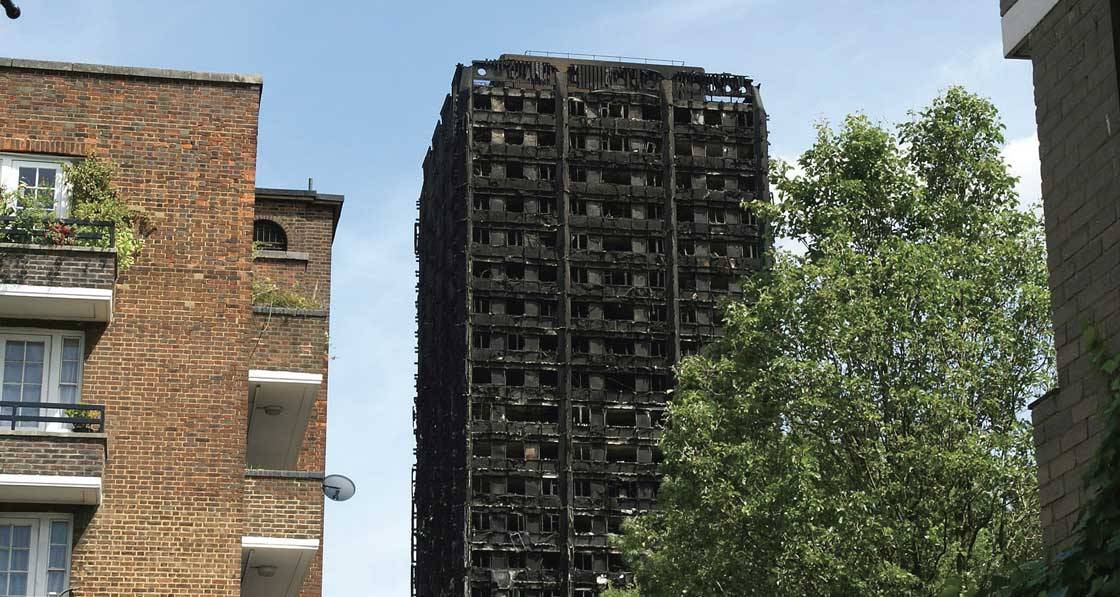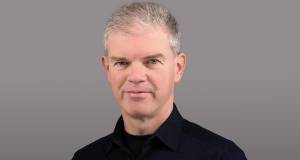
- General
- Posted
Grenfell inquiry hears of damning test culture
Before it was halted until January 2021, the Grenfell Tower inquiry heard a series of damning testimonies on the culture towards fire safety within leading building material manufacturers and certification bodies in the years leading up to the fire.
This article was originally published in issue 36 of Passive House Plus magazine. Want immediate access to all back issues and exclusive extra content? Click here to subscribe for as little as €10, or click here to receive the next issue free of charge
Insulation manufacturer Kingspan admitted to “shortcomings” in its testing and marketing material after the company withdrew three test results it had previously used to support claims that its phenolic insulation product, Kooltherm K15, was suitable on buildings over 18 metres tall.
“We have now concluded that three tests carried out in 2005 and 2014 featured product that was not sufficiently representative of the product currently sold into the market place,” a company spokesperson told The Irish Times.
Kooltherm K15 was used on approximately 5 per cent of the externally-clad area of Grenfell Tower after the project ran out of the main insulation product used, Celotex RS5000, a polyisocyanurate (PIR) insulation. In 2005, Kooltherm K15 passed a BS 8414 fire test — which mimics a fire breaking out of a window and coming in contact with external cladding — in a build-up using a non-combustible cement fibre cladding and cavity barrier construction. Counsel for Grenfell survivors Stephanie Barwise said this combination, “was not commercially available”.
A different formulation of K15 was introduced a year later, and the successful 2005 test only applied to specifications where the same assembly was used, but Kingspan did not clarify this in its marketing literature, and continued to use the 2005 test to promote Kooltherm as suitable for high-rise buildings.
Two further tests carried out in 2014 were also withdrawn by Kingspan as they were on test versions of K15 not sufficiently representative of the product on the market.
Meanwhile, in one other BS 8414 test carried out by the company, including one on the new version of K15 in 2007, the assembly became a “raging inferno”, according to former Kingspan technical expert Ivor Meredith.
“We were struggling to get the technology to pass, to justify our lie,” he told the inquiry. Meredith said he was shocked the insulation burned so ferociously, but that when he raised his concerns with managers, he was criticised for being too negative about Kingspan products.
Meredith had a drug addiction and was later dismissed by the company. The inquiry also heard that Phillip Heath, a technical manager at Kingspan, had written in an email that facade consultant Wintech could “go fuck themselves” after raising concerns about the fire safety of K15 in one specification.
Kingspan said that it was unaware its product had been used at Grenfell Tower until after the fire, and that it would have advised against its use with the aluminium composite material (ACM) that clad the building.
Kingspan also said that it does not believe a different insulation specification would have prevented the spread of the fire, and that this view is backed by large-scale testing and peer-reviewed modelling. The company also says: “The company has now carried out extensive testing and re-testing which validates, for current K15, the BS 8414 performance claims made previously.”
The Grenfell Inquiry is still trying to establish the exact contribution of different materials to the spread of the fire.
In his earlier phase one report inquiry chair Sir Martin Moore-Bick concluded that “the principal reason why the flames spread so rapidly up the building was the presence of the ACM panels with polyethylene cores,” but also said the insulation materials behind the cladding “more likely than not” also contributed to the spread of the fire.
The main insulation product used on Grenfell was Celotex RS5000. It was previously reported that Celotex used additional fire-resisting boards in a 2014 fire test of the product, though these were not declared in its subsequent marketing of the product.
In November, former Celotex product manager Jonathan Roper told the inquiry this was done with the full approval of senior management and that the company’s actions had been “deliberately misleading and dishonest”. Roper said he had been asked to “lie for commercial gain”.
“I went along with a lot of actions at Celotex that looking back on reflection were completely unethical,” Roper said.
RS5000 initially failed its 2014 test, when flames reached the top of the nine-metre mock-up wall within 26 minutes. But a fire-resistant magnesium-oxide board was later added to the BRE test rig.
The build up then passed the test, and Roper said that after he gave a presentation to senior management about the testing process, he was told to remove all reference to the failed test and the addition of magnesium oxide boards. When the test report from the BRE was published it contained no reference to the fire-resistant boards.
Celotex said in a statement: “These matters involved unacceptable conduct on the part of a number of former employees. They should not have happened and Celotex has taken concerted steps to ensure that no such issues reoccur, including the recruitment of new management to oversee its technical, operational and marketing teams as well as designing and implementing changes to testing processes and quality assurance systems.”
The company also said that tests undertaken since the fire had verified the fire safety of RS5000. “In April 2018, a test of a particular rainscreen cladding system to BS8414:2 2005 in which RS5000 was one component was shown to meet the criteria of BR135 [fire performance of external thermal insulation for walls of multistorey buildings] which was the test result stated as having been achieved in Celotex’s products literature at the time of the Grenfell Tower refurbishment.”
Meanwhile at the enquiry Sam Stein — a lawyer for the survivors and bereaved of Grenfell Tower — slammed the culture of testing and certification. “The public should have been protected from these ruthless and criminal manufacturers by the bodies who were responsible for testing and certification. But [they] provided no such protection. Instead they reinforced the dangerous and dishonest culture within the industry,” he said.
“‘The BRE, the BBA, and others signally failed to discharge these responsibilities adequately. They were far too close to their customers. Testing was inadequate and certification haphazard.”
At the inquiry it was also revealed that Claude Wehrle, head of technical sales at cladding manufacturer Arconic, had sent an email saying that a shortfall in the material’s fire performance was “something that we have to keep as VERY CONFIDENTIAL!!!!”.
In a previous email Wehrle had said that Arconic was “very lucky” that a fire in Strasbourg had not passed to a nearby building that was clad with the product, Reynobond PE, and that “we really need to stop proposing PE [polyethylene] in architecture!”.
The inquiry will resume in January after being halted before Christmas when a member of staff tested positive for Covid-19.
Related items
-
 History repeating
History repeating -
 King of the castle
King of the castle -
 Energy poverty and electric heating
Energy poverty and electric heating -
 New Ejot profile cuts thermal bridging losses by 25mm insulation equivalent
New Ejot profile cuts thermal bridging losses by 25mm insulation equivalent -
 Build Homes Better updates Isoquick certification to tackle brick support challenge
Build Homes Better updates Isoquick certification to tackle brick support challenge -
 #BuildingLife Series: Director at CORA Consulting Engineers, John Casey
#BuildingLife Series: Director at CORA Consulting Engineers, John Casey

